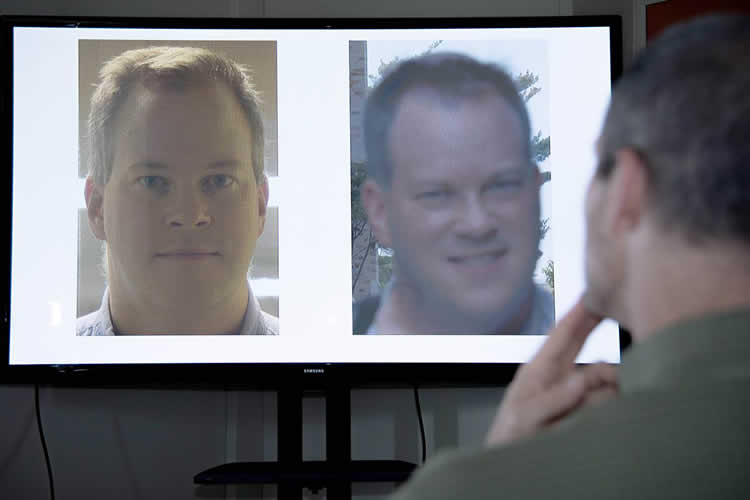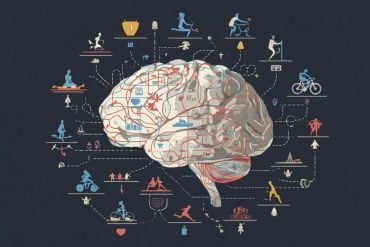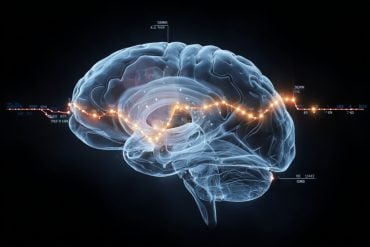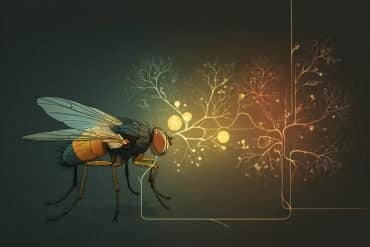Summary: Researchers answer the questions of whether artificial intelligence is better at facial recognization than humans. The study found both humans and deep learning algorithms perform with similar levels of accuracy when identifying faces. However, when AI technology is combined with human intelligence, the accuracy attainment levels shot up and better results were achieved than when two facial examiners worked together.
Source: University of Huddersfield.
The findings from a major study to confirm whether forensic facial examiners and people with innate recognition skills – ‘super-recognisers’ – could outperform the latest computer algorithms. The results came as a surprise.
ACCURATE facial identification from images is increasingly vital as an aid to criminal investigation and to prevent miscarriages of justice.
However, despite the rise of facial recognition technology, the final decision on facial identifications in criminal and security situations currently resides with humans.
For the first time, a major study has investigated the merits of ‘man versus machine’ to establish the benefits and shortcomings of both when it comes to facial identification.
Forensic facial examiners – trained experts in facial recognition – are believed to be best at making identity decisions. The decisions they make are often used as evidence in court. Gifted individuals or “super-recognisers” – people with a natural ability for facial recognition–are also expected to perform well on identification tasks.
But the burning question now is could the latest computer algorithms out-perform their human counterparts?
A lecturer at the University of Huddersfield has taken part in major research projects that have probed the issue.
Dr Eilidh Noyesjoined the University as a lecturer in cognitive psychology and face recognition is a key area of her research and teaching.
While based at the University of Texas in Dallas, she took part in the most comprehensive examination so far that has appraised identification performance among groups of humans – including specially-trained experts – and by state-of-the-art face recognition algorithms.
The result… a draw! Despite huge strides in algorithm performance in recent years, the outcome was more or less a stalemate with the newest computer algorithm performing at similar levels of accuracy to the average score of the forensic examiners. There was also no difference in the performance of forensic facial examiners and super-recognisers, reassuringly, both groups outperformed the control groups (students and finger print examiners) on the identification task.
However, the startling result was that when man and machine were combined and worked together, the accuracy attainment level shot up and achieved far better results even than when two facial examiners worked together.
Face recognition accuracy
The findings have been published in the PNAS (Proceedings of the National Academy of Sciences of the United States of America) in an article entitled Face recognition accuracy of forensic examiners, superrecognizers, and face recognition algorithms.
The project, leading to the article in PNAS,was global, with the researchers able to test trained forensic facial examiners based in five continents. Also included in the project were “super-recognisers” – who had no professional training, but had demonstrated a strong innate ability to recognise faces.
All of the participants were presented with 20 carefully-selected and challenging image pairs and the article includes tables showing the success rates of all the practitioners and technologies included in the project.
“There are all these ways to perform face identification and it is really important that we get the correct answers because of the consequences,” said Dr Noyes. “So we performed the first comprehensive study to be able to directly compare performance of forensic examiners, super-recognisers, control participants and some of the state-of-the-art computer algorithms in face recognition.

“What we found is that the best results are achieved by combining the results of a forensic expert with our best-performing algorithm. So it’s not the case that man has necessarily to compete with machine – we get the best results when they work together.”
“We think that humans are doing something a little bit different to the algorithm,” added Dr Noyes. “So you can use the strengths of both to get the best results.”
Dr Noyes has also co-authored a recent article in Applied Cognitive Psychology that investigates the problems identifying faces in poor-quality images, such as CCTV footage. And she is lead author of a 2018 article in Cognitive research: principles and implicationsthat analyses body and biological motion recognition as relevant skills for person identification.
Source: University of Huddersfield
Publisher: Organized by NeuroscienceNews.com.
Image Source: NeuroscienceNews.com image is adapted from the University of Huddersfield news release.
Original Research: Open access research for “Face recognition accuracy of forensic examiners, superrecognizers, and face recognition algorithms” by P. Jonathon Phillips, Amy N. Yates, Ying Hu, Carina A. Hahn, Eilidh Noyes, Kelsey Jackson, Jacqueline G. Cavazos, Géraldine Jeckeln, Rajeev Ranjan, Swami Sankaranarayanan, Jun-Cheng Chen, Carlos D. Castillo, Rama Chellappa, David White, and Alice J. O’Toole in PNAS. Published November 2018.
doi:10.1073/pnas.1721355115
[cbtabs][cbtab title=”MLA”]University of Huddersfield”Man Versus Machine: Who Wins When It Comes to Facial Recognition?.” NeuroscienceNews. NeuroscienceNews, 3 December 2018.
<https://neurosciencenews.com/man-machine-facial-recognition-120191/>.[/cbtab][cbtab title=”APA”]University of Huddersfield(2018, December 3). Man Versus Machine: Who Wins When It Comes to Facial Recognition?. NeuroscienceNews. Retrieved December 3, 2018 from https://neurosciencenews.com/man-machine-facial-recognition-120191/[/cbtab][cbtab title=”Chicago”]University of Huddersfield”Man Versus Machine: Who Wins When It Comes to Facial Recognition?.” https://neurosciencenews.com/man-machine-facial-recognition-120191/ (accessed December 3, 2018).[/cbtab][/cbtabs]
Abstract
Face recognition accuracy of forensic examiners, superrecognizers, and face recognition algorithms
Achieving the upper limits of face identification accuracy in forensic applications can minimize errors that have profound social and personal consequences. Although forensic examiners identify faces in these applications, systematic tests of their accuracy are rare. How can we achieve the most accurate face identification: using people and/or machines working alone or in collaboration? In a comprehensive comparison of face identification by humans and computers, we found that forensic facial examiners, facial reviewers, and superrecognizers were more accurate than fingerprint examiners and students on a challenging face identification test. Individual performance on the test varied widely. On the same test, four deep convolutional neural networks (DCNNs), developed between 2015 and 2017, identified faces within the range of human accuracy. Accuracy of the algorithms increased steadily over time, with the most recent DCNN scoring above the median of the forensic facial examiners. Using crowd-sourcing methods, we fused the judgments of multiple forensic facial examiners by averaging their rating-based identity judgments. Accuracy was substantially better for fused judgments than for individuals working alone. Fusion also served to stabilize performance, boosting the scores of lower-performing individuals and decreasing variability. Single forensic facial examiners fused with the best algorithm were more accurate than the combination of two examiners. Therefore, collaboration among humans and between humans and machines offers tangible benefits to face identification accuracy in important applications. These results offer an evidence-based roadmap for achieving the most accurate face identification possible.






